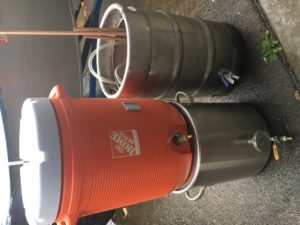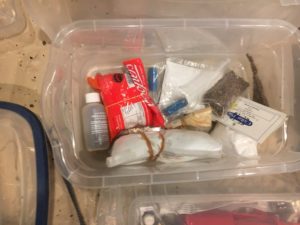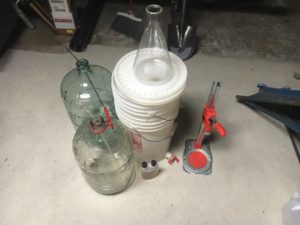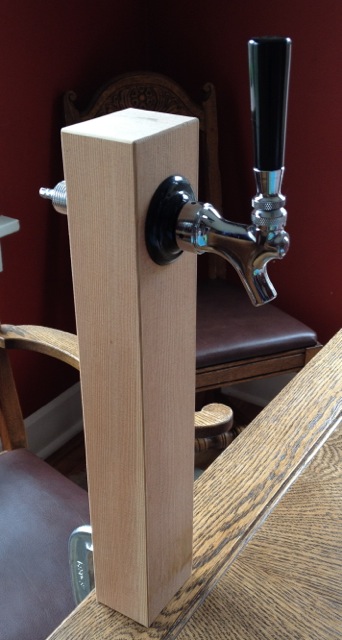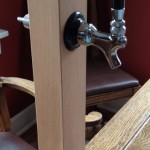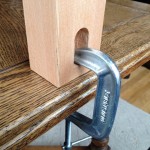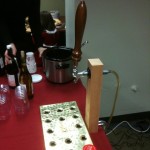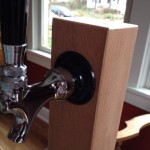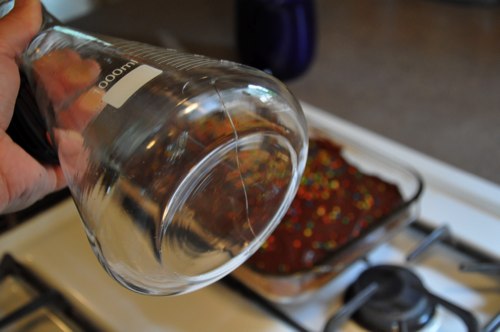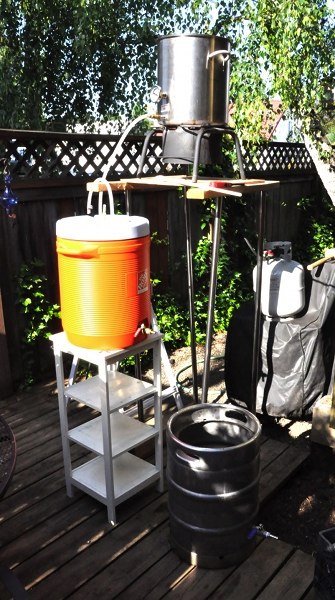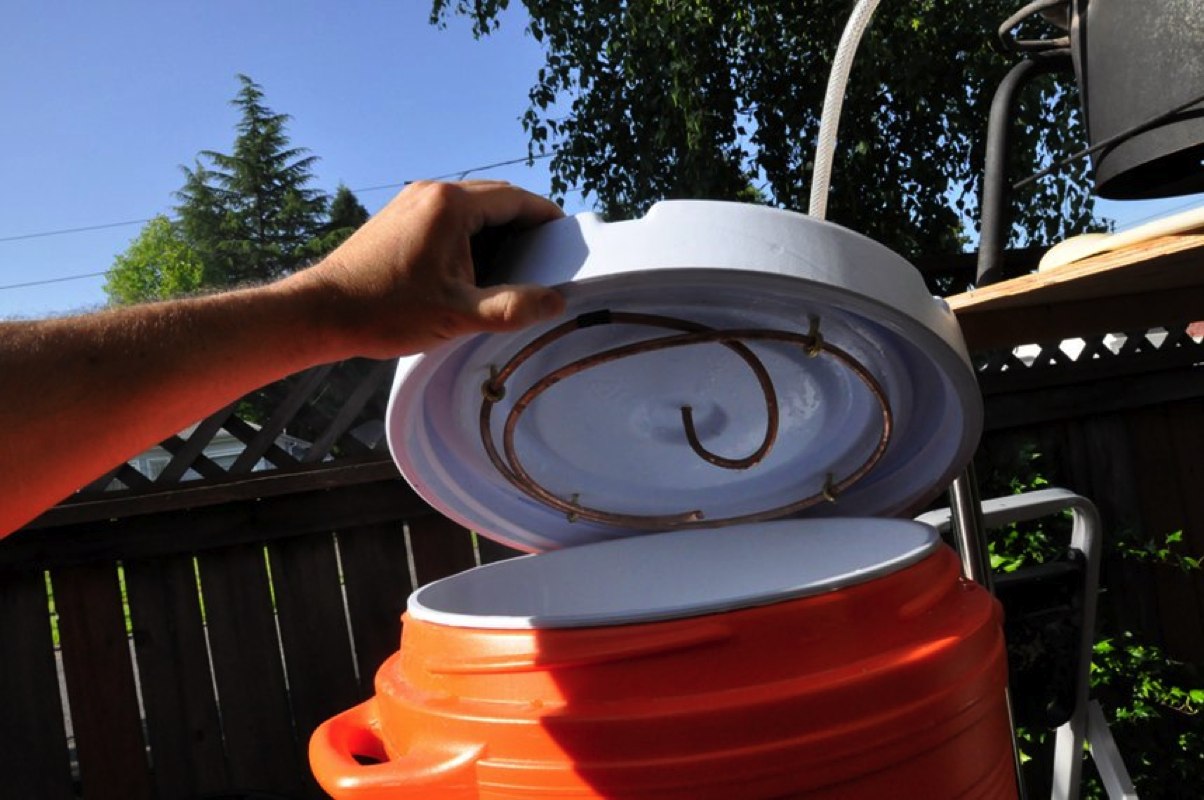Today Rich and Brent stopped by to join in the brewing session. It was a slightly longer than normal session because I chose to modify several variables in the brew house. Not only did I try out a prototype tier system (fugly), I used my new kettle. Luckily, the gear-related problems were minor, and the major time consumer was actually a cold mash. My strike temp was too low, so we pulled off a gallon or so and reheated it before adding it back. This of course made it too hot, so I added water from the HLT and the hose when the HLT wasn’t quick enough, but that dropped it too much. After 2 more pseudo-decoction mashes, we finally go up to the right temperature and let it rest.
Rich brought over some great rye bread, so we stepped next door for some ham and swiss and had some fine sandwiches with a Green King Suffolk Strong Vintage Ale. Talk about a great lunch. The Suffolk Strong a blend of a pale and a strong ale aged in wooden vats for two years. It had a wonderfully sour woody flavor and gave off a delightful aroma. Literally like someone’s old, musty woodpile. Must be the Cooper in my lineage that makes that an attractive flavor.
Anyway, the lautering went quite well and we used Rich’s refractometer to watch the gravity and ended up boiling about an hour and a half later than I’d expected. Rich had to leave for another engagement so Brent helped me cool and rack the beer, which was problematic because something circumvented the false bottom and clogged the dip tube to the spigot.
Anyway, we came out at 1.058 and the wort tasted wonderful. So much sweater than usual, largely because it wasn’t obliterated by my usual overdoes of hops.
